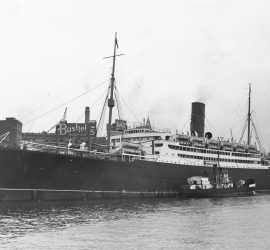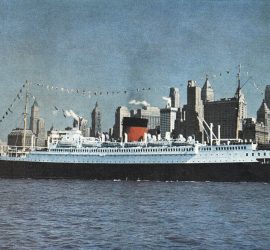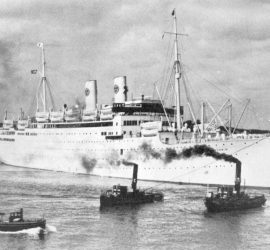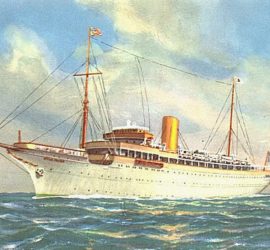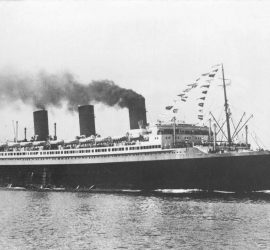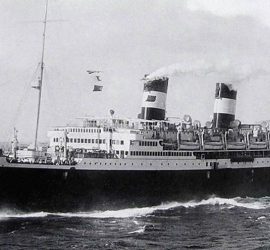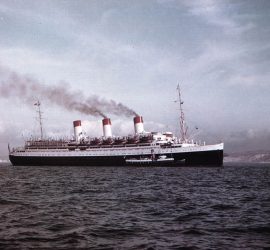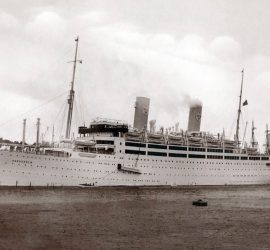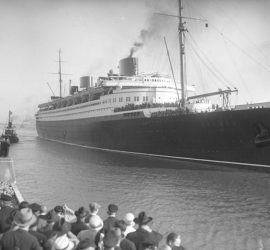1923 – 1956 / An intermediate Cunarder without the flair of her larger fleetmates, the second Franconia entered service in the years between the world wars. She served with distinction in both peace and war, before being sent to the breakers in 1956.
Monthly archives: April 2018
1924 – 1962 / Also known as Empress of Australia (II) and Venezuela / Built as a smaller, less glamorous ship of the French Line, De Grasse was captured by Germany during WWII. Returned to her original owners after the war, she was later sold to Canadian-Pacific Line. Her final years was spent as an Italian ship on the South American run.
1925 – 1966 / Also known as Berlin / The first ship built for the Swedish-American Line, the Gripsholm was also the first motor ship on the North Atlantic run. She helped cement the company’s reputation on the high seas, but was eventually sold and enjoyed a second life as a German liner.
1927 – 2006 / A truly unique vessel, the Stella Polaris was constructed purely with cruising in mind. Offering an exclusive experience, she quickly became a legend in her field and would enjoy a long, distinguished career. After a few decades as a stationary ship in Japan, she was unfortunately lost when she sank while under tow in 2006.
1927 – 1959 / Ushering in a new era, Île de France catapulted to stardom when she introduced Art Deco on the North Atlantic in 1927. Showcasing all the best France had to offer, she was a ship of state in every sense of the word.
1927 – 1946 / An Italian ship on the South American run, the Augustus was also employed doing cruises during the hard times of the 1930s. She was converted into an aircraft carrier during World War II, but was damaged beyond repair in the conflict.
1927 – 1940 / As one of the last ships built with reciprocating engines in conjunction with an auxiliary turbine, the second Laurentic was an intermediate White Star liner built to fill gaps in the interwar years. When World War II broke out, she was refitted as an armed merchant cruiser, and in that guise she was torpedoed and sunk in 1940.
1927 – 1945 / As the largest and fastest liner on the South American run, this German liner saw great success during her early years. She remained stationary during World War II, and was tragically bombed in 1945 while packed full with prisoners transferred from concentration camps. More than 5,000 lives were lost.
1928 – 1965 / Also known as Italia / As Swedish-American Line’s second newbuild, the Kungsholm offered both crossings and cruisings up until the outbreak of World War II, when she was requisitioned and used as an American troopship. After the war, her career continued under a new name with Home Lines.

